
BRAVA Award Winners 2023 – Julie Paschkis
Julie Paschkis
2023 Special Choice Category:
Children’s Book Illustrator Award (Puget Sound region)
This award supports the work of contemporary visual artists from the Puget Sound region who work in the field of Children’s Book Illustration. Work may include original illustration included and published within the book format, and designed for a readership of 16 years or under. Work can include book cover, inside illustrations, and whole book design, including but not limited to graphic novels, e-books, interactive books, picture books, chapter books, works of fiction and non-fiction, zines, reference books, artist books, and pop-up books.
Paschkis was born in Pennsylvania where she lived in a big house in the woods, played in the creek, and under the trees, was sometimes happy and sometimes unhappy, and visited the local library every two weeks bringing home stacks of books. Decades later, she has illustrated over 40 books for children, 12 of which she also wrote. Those books have been critically acclaimed by The New York Times, Horn Book Awards, Children’s Book Council, Cybil Poetry Award, Americas Award, Aesop Accolade, and Charlotte Zolotow Honor Award.
In school she received a Nation Merit Scholarship andd attended a folk-high-school in Norway for a year where she learned Norwegian, weaving, and folk arts. She started college at Cornell to study pre-law but veered sharply left and transferred to the School for American Craftsmen for her BFA in weaving where her education in craft allowed her to find her own way in painting and art in general.
Several years later, Julie began to make and sell crafts and moved to Seattle and taught art for several years. “My work grew when it got my full attention,” remarked Paschkis. “Making books has been the center of my creative life, but I also make art that isn’t for books. I paint all the time. I have been exhibiting paintings for 32 years with over 20 solo shows at galleries in Seattle, Portland, Austin, and the Skagit Valley. I like art that is available to all kinds of people. To that end I’ve made posters, t-shirts and cards. I’ve designed fabric, scarves, hooked rugs and tiles.”
Paschkis likes to experiment and has made art out of bread, out of old olive oil tins and out of fabric, made collages and cut stencils, and learned to paint with her left hand after breaking her arm. What all of her work has in common is that it tells stories – some playful, some deep.
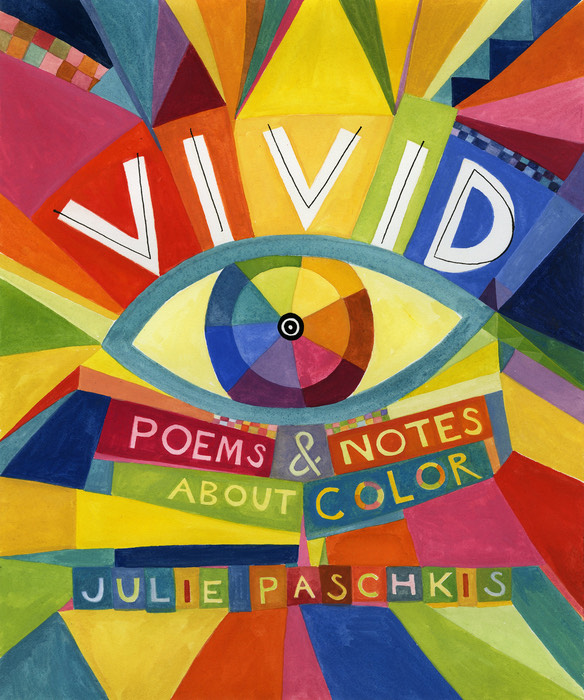
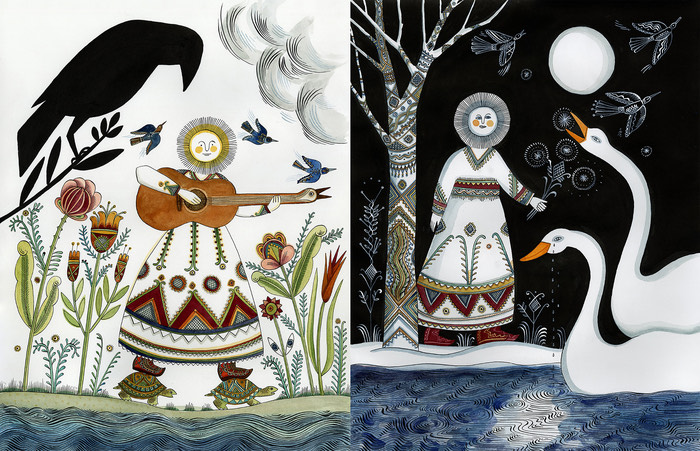
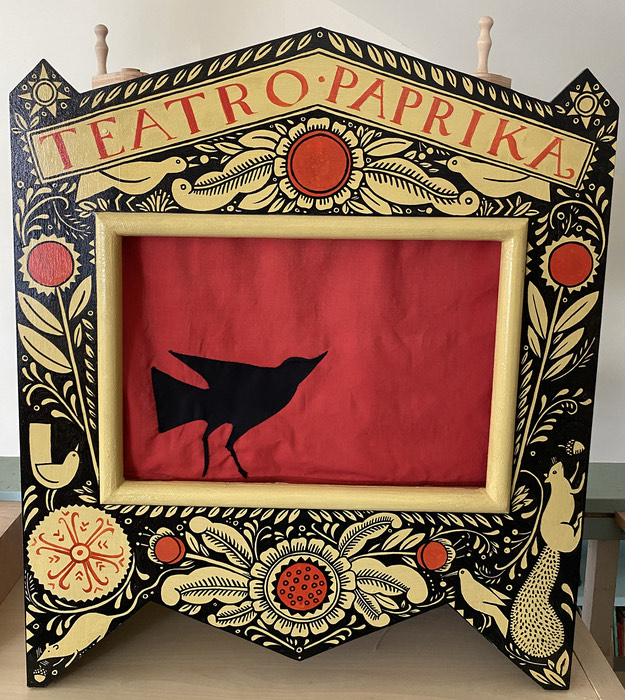
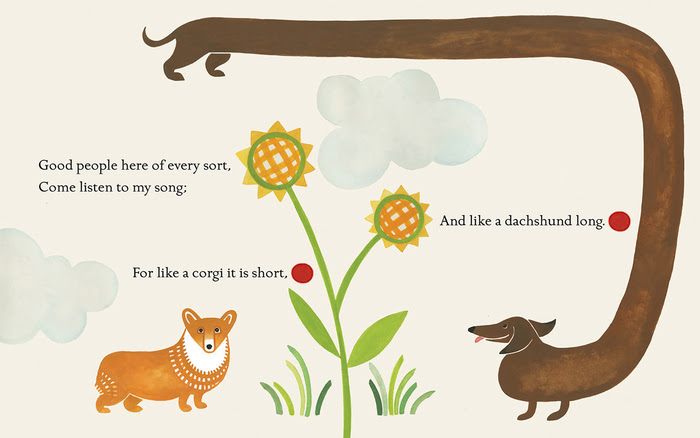
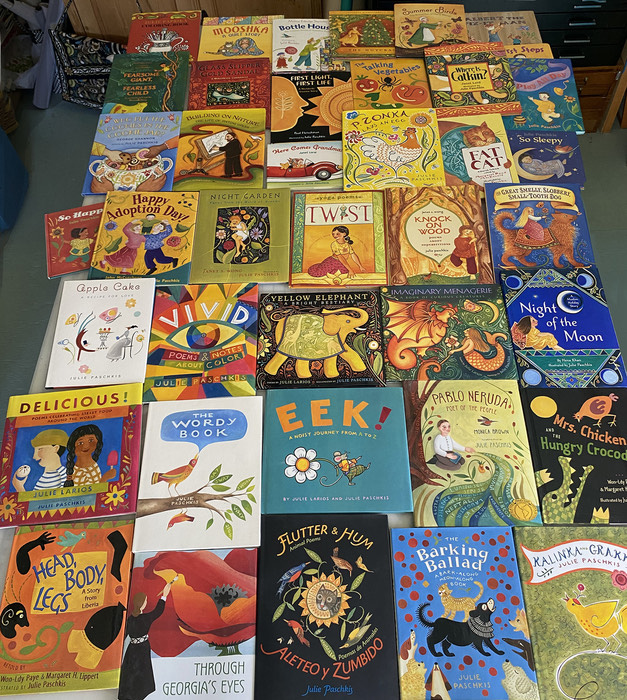
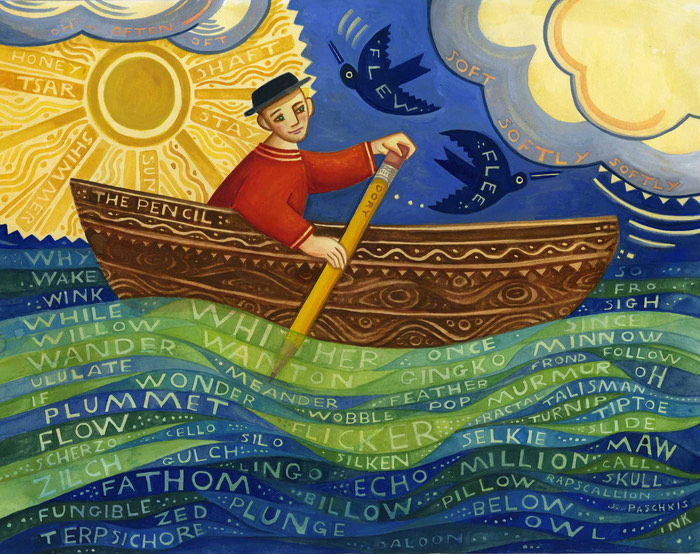
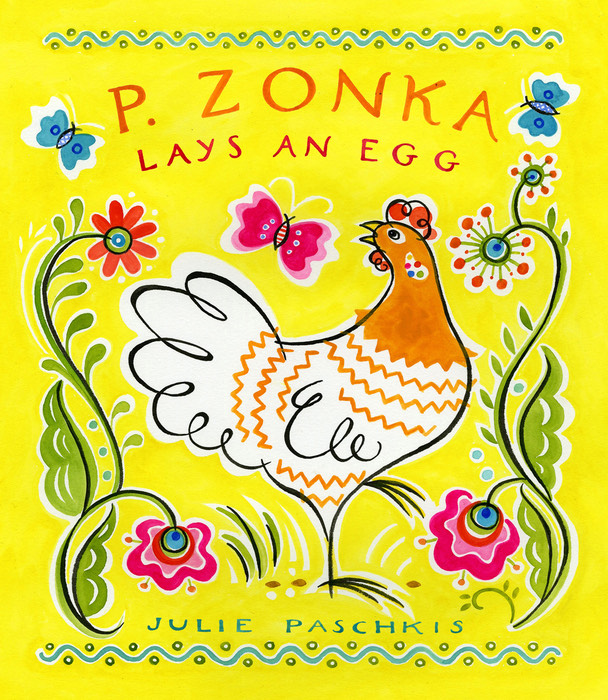
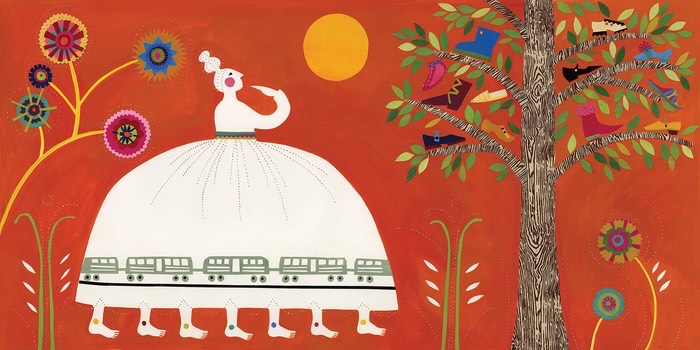
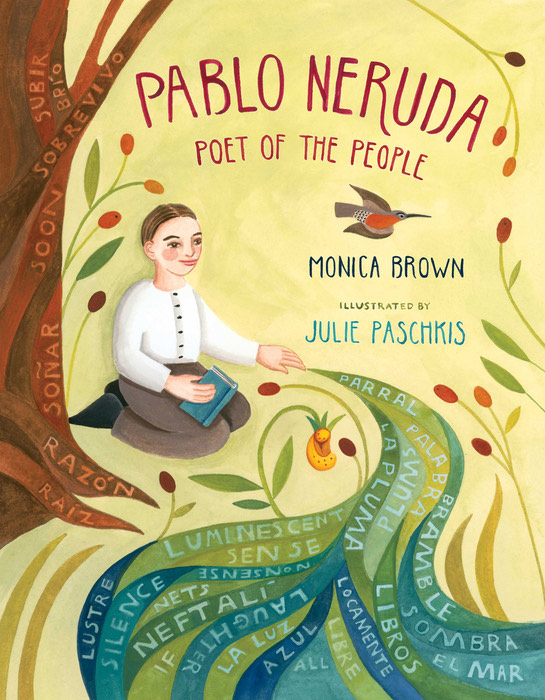
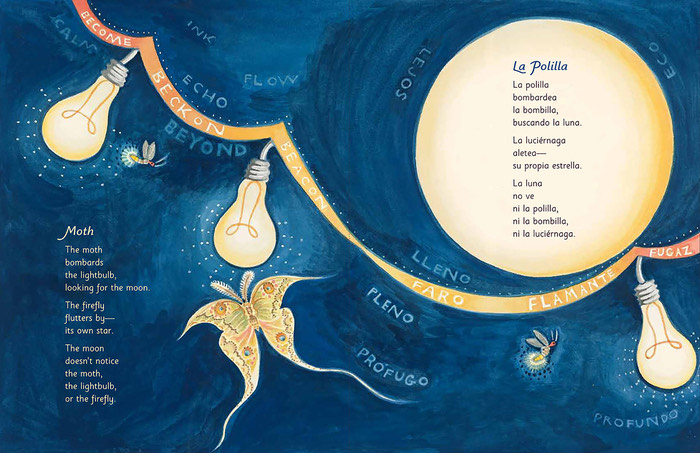
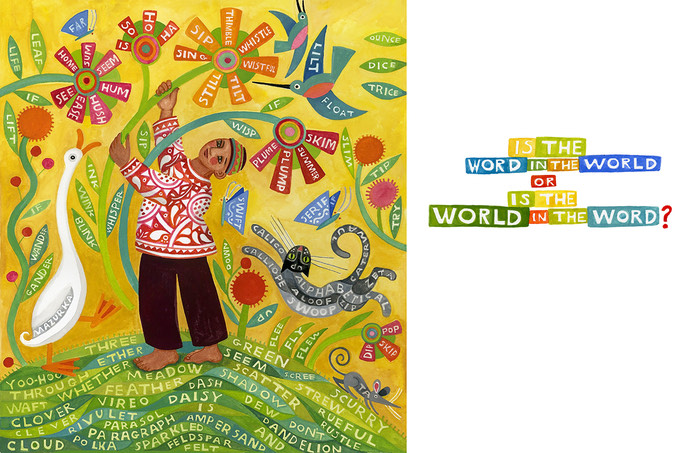
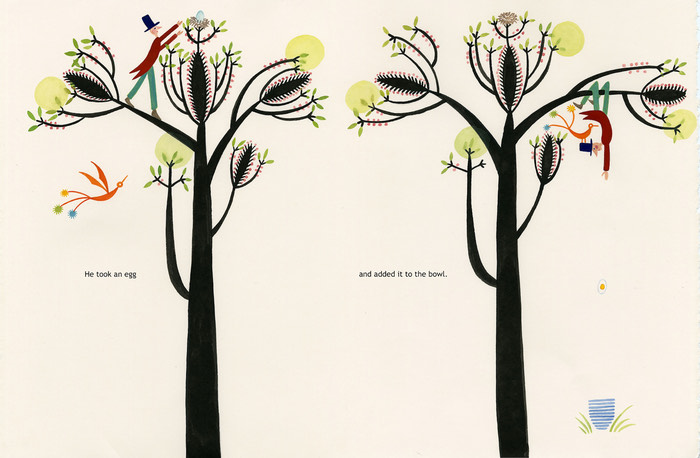
Artist Statement
Please come up to my studio. The stairs are steep – step carefully. Welcome!
Over there is a tall bookshelf with my favorite books. There are volumes on illuminated manuscripts and fraktur, on textiles and folk art from around the world, books of lettering and typography. There are reference books about animals, birds, insects, hands and food. This shelf holds my favorite children’s books including some that belonged to my mother when she was growing up.
On that big table in the middle of the room you will see piles of work in various stages of completion. Yes, it’s a bit messy. I’m building some paper lanterns. That is a piece of linen that I am stenciling. I’m not sure what it will end up being. Over there is a crankie theater (Teatro Paprika) where I can tell stories with scrolls.
Under the window is the long wooden table where I work on paintings and children’s books. On a shelf above the table there are cups of pencils, paintbrushes, exacto knives, bottles of ink, tubes of paint, rulers, scissors, string, and tape. A lot of those tools are also scattered on the table.
Making art in this room feeds my spirit and is the core of my life.
When I write or paint I start with an idea that sparks me. Often that original thought or vision comes just before I wake up. My inner editor is still asleep and I allow myself to consider ideas that are strange. When I wake up many of those thoughts seem ridiculous. But some are worth nurturing. Each book has started with a slender idea that grew.
I get up very early in the morning and carry my fragile idea through the dark house up to my studio. As I work the original idea changes. Some elements have to be jettisoned. New thoughts jostle to be heard. I love the time when an idea comes alive and the process becomes two-way: the work talks back to me.
When I illustrate books written by other people I do a lot of research. I learn as much as I can so that I can amplify the author’s intentions and enrich the text with the art. I have illustrated folk tales, stories, biographies and poetry.
When I get a manuscript I roll the words around in my head until I get a sense of what the pictures should look like. Then I paint some sample illustrations. The first painting is the most important because it sets the style for the whole book.
I have illustrated books with pen and ink, gouache painting, resist and collage. I love vivid and intense colors. Some of the books are very detailed and others are streamlined with little detail. Techniques and styles that I have played with in paintings or craft projects find their way into the books.
I use a computer to scan my sketches and to communicate back and forth with the editor. But I create my work on paper, not using the computer. I think with my mind, but I also think with my hands.
Many of the books I have written are variations on the theme that it is good to look at things aslant. P. Zonka Lays an Egg is about a chicken who transforms all that she sees into the colorful and decorative eggs that she lays. Apple Cake: A Love Story has only a recipe for text but the art shows a lovelorn swain creatively baking a cake. He gathers an egg from a nest, salt from the sea, sugar from the clouds. When he adds baking powder a whole town rises. He bakes the cake over the flame from a dragon’s mouth.
The underlying theme is that your imagination can transform the world, and vice versa. This is what I am doing in my work and what I am saying in my books.
Another theme that I explore is language itself. Words can be savored for their sound and shape as well as for meaning. In paintings those other qualities have time to surface. The words bump into each other and into other images in the painting.
I have illustrated several books using words in the paintings as an additional element – those extra words are not in the manuscripts. The first was Pablo Neruda by Monica Brown, using both Spanish and English in the illustrations to make the words newly unfamiliar and enticing. After that I wrote Flutter and Hum/ Aleteo y Zumbido, poems about animals, also in Spanish and English. The Wordy Book assembles paintings I made over many years and pairs them with open-ended questions that invite wandering and wondering.
I love picture books because the words and art are inseparable. And I love books because they are intimate – you hold them in your hands. Picture books made indelible impressions on my mind when I was a child. I remember phrases and images still, and the feel of the paper, and the mood of the stories. I lived inside those books.
It is a privilege to create for children because they see and feel so deeply. I hope that the stories and pictures made in my studio will tumble into the world, find their way to children and matter to them.
I wrote a book called Mooshka about a quilt that tells family stories – a different story for each scrap of cloth. In the book the older sister lifts her quilt up in the air and lets it float down onto her younger sister. I got a letter from someone who told me that every night her son asks her to Mooshka his quilt – meaning to float the quilt down on him and then tell him stories. And that is why I make books.